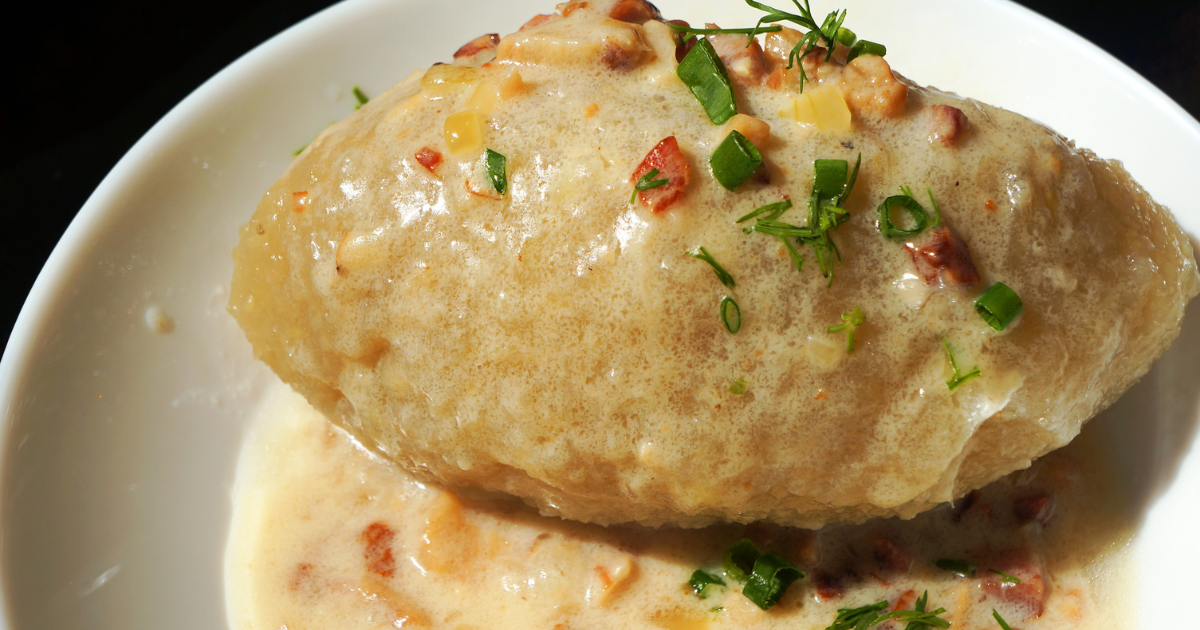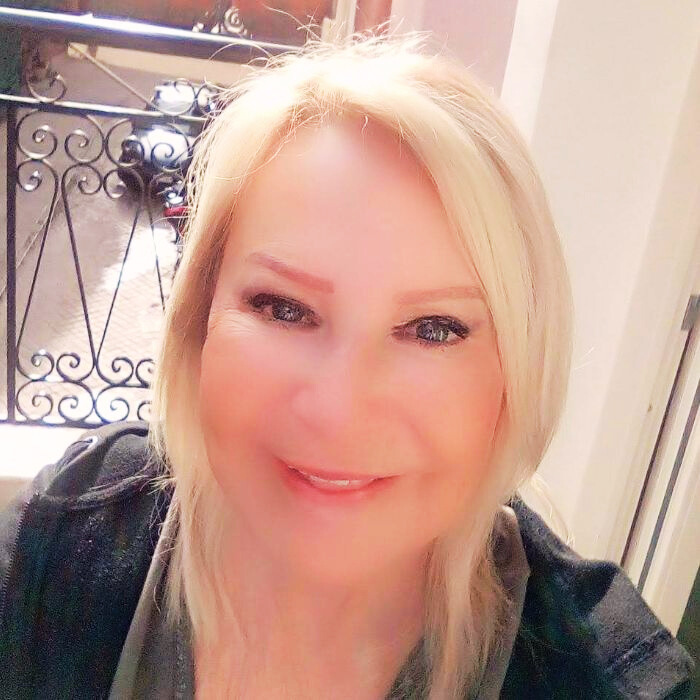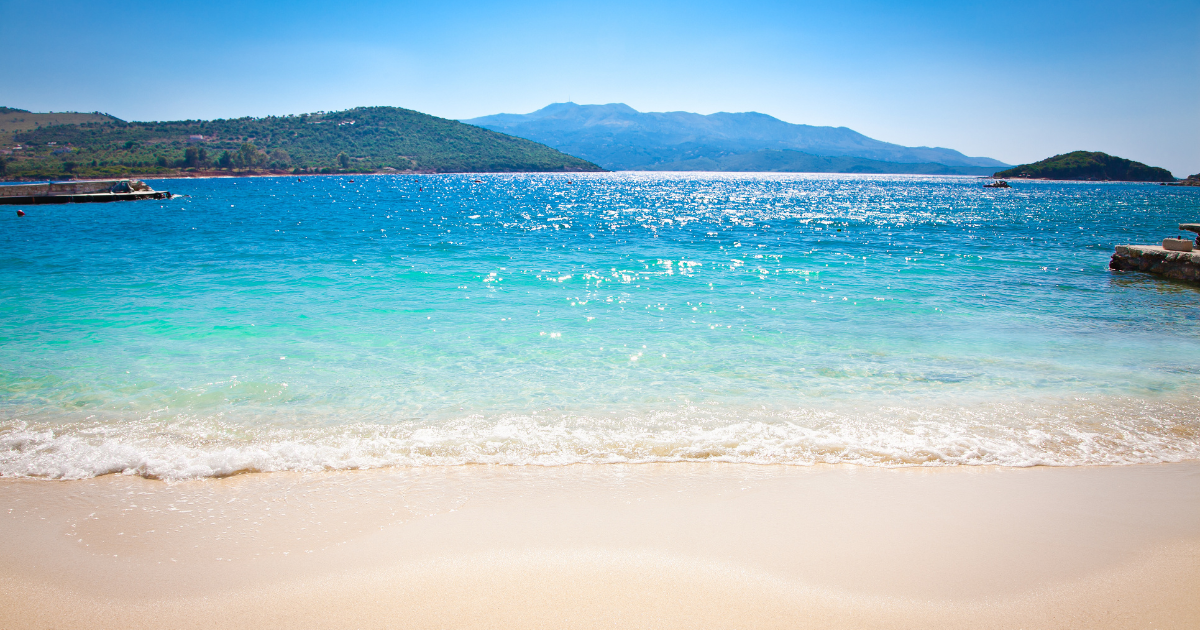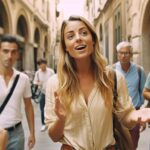Last Updated on January 12, 2024 by Rikki
Lithuania is a country with a rich culinary tradition, offering a wide variety of delectable foods that will satisfy even the most discerning food lovers. From traditional dishes to modern fusion cuisine, Lithuania has something to please every palate.
Key Takeaways:
- Lithuania is known for its diverse and delicious foods.
- Traditional Lithuanian dishes are a must-try.
- Cold beetroot soup and Švyturys beer are popular traditional dishes.
- The IDW Esperanza Resort near Vilnius offers a fusion cuisine experience.
- Visitors can also explore historical sites, enjoying a guided tour through the Trakai Castle and Vilnius.

Traditional Lithuanian Food Guide – A Taste of Lithuanian Authenticity
When it comes to traditional Lithuanian cuisine, you can expect some of the most delicious foods in Europe. The dishes are deeply rooted in the country’s history and reflect the unique flavors of the region. Lithuanian cuisine is known for its hearty and wholesome nature, with a focus on using locally sourced ingredients and traditional cooking methods.
The IDW Esperanza Resort, located near Vilnius Airport, offers a fusion cuisine that combines French, Italian, Mediterranean, Chinese, Korean-Japanese, and Lithuanian traditions. Some traditional Lithuanian dishes to try include cold beetroot soup served with boiled potatoes and Švyturys, a Lithuanian beer. The resort also provides a wide choice of salads, fish, and meat dishes.
Table: Popular Traditional Lithuanian Dishes
In addition to the dining options, there are various activities available at the resort, such as rowing, fishing, running, cycling, and water-based activities. The resort also offers a Russian banya experience and a spa for relaxation and beauty treatments. Visitors may also explore the historical sites of Trakai Castle and Vilnius, where there is a rich history and numerous places of interest.

| Dish | Description |
|---|---|
| Cepelinai | Potato dumplings filled with minced meat |
| Kugelis | Grated potato casserole with bacon |
| Vėdarai | Pork intestines stuffed with barley and seasoned with various spices |
| Šaltibarščiai | Cold beetroot soup served with boiled potatoes |
| Cepelinai | Potato dumplings filled with minced meat |
The Lithuanian people are proud of their country and are happy to share it with visitors. So, whether you’re indulging in the flavors of traditional Lithuanian cuisine or exploring the vibrant culture and history of the country, a visit to Lithuania is sure to leave you with unforgettable memories.
Cold Beetroot Soup – A Refreshing Traditional Lithuanian Dish
One of the must-try dishes in Lithuania is the famous cold beetroot soup, known locally as “šaltibarščiai,” which is a delightful and refreshing dish, especially during the summer months.

This traditional Lithuanian soup is made with vibrant, fresh beets, buttermilk or kefir, and seasoned with dill, cucumber, and spring onions. The result is a vibrant pink soup that is both visually appealing and full of flavor.
The cold beetroot soup is typically served chilled and is the perfect dish to cool down on a hot summer day. Its tangy and slightly sour taste combined with the earthiness of the beets creates a unique and refreshing flavor profile. The soup is often garnished with a dollop of sour cream, which adds a creamy richness to the dish.
| Ingredients | Instructions |
|---|---|
|
|
“The cold beetroot soup is a beloved dish in Lithuania, and it’s not just about the taste. It’s a symbol of our culinary heritage and represents the simplicity and freshness of our traditional cuisine.” – Chef Jonas Petraitis, IDW Esperanza Resort
When visiting Lithuania, make sure to try this authentic Lithuanian dish. You can enjoy it at various traditional restaurants or even make it yourself using the recipe provided. The cold beetroot soup is a true gastronomic delight that embodies the flavors and traditions of Lithuania.
Need to Try! Dumplings, Potatoes, and More – Staples of Lithuanian Cuisine
Dumplings and potatoes play a significant role in Lithuanian cuisine, with numerous traditional dishes featuring these ingredients in unique and delicious ways. Whether you’re a fan of hearty comfort food or seeking to explore the authentic flavors of Lithuania, these staples are sure to satisfy your cravings.
One beloved Lithuanian dish is “Cepelinai,” also known as “zeppelins” due to their resemblance to the airships. These large potato dumplings are filled with minced meat, cheese, or mushrooms and served with sour cream and bacon. The combination of tender potato dough and savory fillings creates a truly indulgent culinary experience.
In addition to dumplings, potatoes feature prominently in other Lithuanian favorites like “Bulviniai blynai,” which are potato pancakes served with sour cream or applesauce. These crispy delights are perfect for breakfast or as a side dish to accompany a main course.

For a hearty meal, “Kugelis” is a must-try. This traditional Lithuanian potato casserole is made from grated potatoes mixed with bacon, onions, and eggs, then baked to perfection. The result is a golden and crispy dish with a creamy interior, bursting with flavors that will transport you straight to the heart of Lithuanian cuisine.
Traditional Lithuanian Potato Dishes
| Traditional Dish | Description |
|---|---|
| Cepelinai | Large potato dumplings filled with meat, cheese, or mushrooms, served with sour cream and bacon. |
| Bulviniai blynai | Potato pancakes served with sour cream or applesauce. |
| Kugelis | Grated potato casserole with bacon, onions, and eggs, baked to perfection. |
These dishes are just a small taste of the rich and diverse culinary heritage of Lithuania. The country’s dedication to preserving traditional recipes and flavors is evident in every bite. So, if you find yourself in Lithuania, don’t miss the opportunity to savor the deliciousness of Lithuanian dumplings, potatoes, and more.
A Must Try When You Eat in Lithuania is Lithuanian Bread: Dark Rye Bread, The Soul of Lithuanian Meals
No meal in Lithuania is complete without a slice of dark rye bread, a beloved and wholesome food that has been a part of Lithuanian cuisine for centuries. This traditional Lithuanian bread holds a special place in the hearts and stomachs of the Lithuanian people. Its deep, rich flavor and dense texture make it the perfect accompaniment to a variety of dishes.
A staple in Lithuanian households, dark rye bread is made from a mixture of rye flour, sourdough starter, and water. The dough is then fermented, giving the bread its distinct taste. It is baked in wood-fired ovens, adding to its rustic charm. The result is a loaf of bread that is dense, moist, and packed with flavor.
Dark rye bread plays a significant role in Lithuanian culture and traditions. It is often used as a foundation for open-faced sandwiches, known as “šaltibarščiai,” topped with a variety of ingredients such as smoked fish, pickles, and herbs. It is also enjoyed on its own, served with butter and a sprinkle of sea salt.
The Versatility of Dark Rye Bread
Dark rye bread is not only a delicious accompaniment to meals, but it is also a versatile ingredient in Lithuanian cuisine. It is used to make traditional dishes like “švilpikai,” which are small dumplings made from leftover bread dough. These dumplings are boiled and served with sour cream, creating a comforting and hearty dish.

Additionally, dark rye bread can be transformed into breadcrumbs, which are then used to coat meat, fish, or vegetables before frying. This adds a delightful crunch and a touch of earthiness to dishes. The bread can also be used to make hearty soups and stews, soaking up the flavors and adding depth to the dish.
When visiting Lithuania, be sure to indulge in a slice of dark rye bread. Whether enjoyed as part of a traditional meal or in a more innovative preparation, this staple of Lithuanian cuisine is a testament to the country’s culinary heritage and a true delight for the taste buds.
| Key Points: |
|---|
| – Dark rye bread is a beloved and wholesome food that has been a part of Lithuanian cuisine for centuries. |
| – Its deep, rich flavor and dense texture make it the perfect accompaniment to a variety of dishes. |
| – Dark rye bread is often used as a foundation for open-faced sandwiches and is enjoyed on its own. |
| – It is a versatile ingredient, used in traditional dishes and as breadcrumbs for frying. |
Discovering Lithuanian Culinary Gems in Vilnius
Vilnius, the vibrant capital of Lithuania, is a food lover’s paradise, with a plethora of Lithuanian restaurants offering a diverse range of traditional and contemporary dishes. Whether you’re a fan of hearty traditional fare or seeking innovative culinary experiences, Vilnius has something to satisfy every palate.
When exploring the city’s culinary scene, be sure to visit renowned establishments such as Lokys, a historic restaurant dating back to the 16th century, known for its game meat dishes and medieval ambiance. For a more contemporary experience, head to Dublis, where you can indulge in seasonal dishes crafted with locally sourced ingredients.
A Vilnius food tour is an excellent way to immerse yourself in the city’s gastronomic delights. Join a cooking class or a guided tour and let knowledgeable locals lead you to hidden gems and popular eateries, sharing fascinating stories and insights along the way. Sample delectable treats like cepelinai (potato dumplings filled with meat or cheese), kibinai (savory pastries with various fillings), and šaltibarščiai (cold beetroot soup).
Top Lithuanian Restaurants in Vilnius
| Name | Location | Specialty |
|---|---|---|
| Purvynės Restoranas | Old Town | Authentic Lithuanian cuisine |
| Telegrafas | City Center | Contemporary European fusion |
| Stebuklai | Užupis | Experimental dishes and unique flavors |
Don’t forget to pair your culinary adventure with a visit to the local markets, such as Hales Turgus, where you can browse stalls brimming with fresh produce, artisanal cheeses, and traditional Lithuanian bread. And for those who appreciate a good brew, Vilnius boasts a thriving craft beer scene, with breweries like Alaus Biblioteka and Špunka crafting unique and flavorful beers.
With its rich culinary heritage and a growing reputation for gastronomy, Vilnius beckons food enthusiasts from around the world to discover the flavors of Lithuania. So pack your appetite and embark on a food-filled adventure in the heart of the Baltics.
Indulging in Lithuanian Desserts – Eat the Best Sweet Temptations
Lithuanian desserts are a delightful celebration of sweet flavors and traditional recipes, with options ranging from indulgent cakes to delicate pastries. The country’s culinary heritage is reflected in these delectable treats, which are often enjoyed during special occasions or as an indulgent treat after a hearty meal. Whether you have a sweet tooth or simply appreciate the artistry of a well-crafted dessert, exploring Lithuanian desserts is a must for any food lover.

One popular Lithuanian dessert that shouldn’t be missed is the famous Lithuanian cake, also known as “Sakotis.” This visually stunning cake is made by pouring batter over a rotating spit and baking it until it forms a cylindrical shape adorned with delicate layers.
The result is a cake with a unique texture and a caramelized outer layer, offering a delightful balance of sweetness. Sakotis is often enjoyed at weddings and other celebrations, making it a true symbol of Lithuanian tradition and hospitality.
In addition to Sakotis, Lithuanian cuisine also boasts a variety of traditional pastries that are sure to satisfy any sweet craving. One such example is “Šimtalapis,” a layered pastry made with thin sheets of dough and a rich filling of nuts, honey, and spices.
The layers are carefully stacked and baked to perfection, creating a pastry that is both visually impressive and incredibly flavorful. Šimtalapis is often enjoyed with a cup of coffee or tea, making it the perfect accompaniment to a leisurely afternoon break.
| Dessert | Description |
|---|---|
| Sakotis | A cylindrical cake with a caramelized outer layer, made by pouring batter over a rotating spit. |
| Šimtalapis | A layered pastry with thin sheets of dough and a rich filling of nuts, honey, and spices. |
When visiting Lithuania, be sure to indulge in these traditional Lithuanian desserts and experience the sweet temptations the country has to offer.
Whether you’re exploring the historical sites of Trakai Castle or Vilnius, or simply wandering through the charming streets of Lithuanian towns, take a moment to savor these delightful treats and immerse yourself in the country’s rich culinary heritage.
From the first bite to the last crumb, Lithuanian desserts are sure to leave a lasting impression on your taste buds and create sweet memories of your gastronomic journey.
Lithuanian Drinks – A Toast to Tradition and a Must Try When You Visit Lithuania
Lithuanian drinks are as diverse and intriguing as the country’s cuisine, with centuries-old traditions and unique flavors that capture the essence of Lithuania. From refreshing meads to traditional herbal infusions, the beverage culture of Lithuania reflects the rich history and cultural heritage of the nation. Whether you’re a fan of beer, spirits, or non-alcoholic beverages, there is something for every taste bud to enjoy in Lithuania.
Mead – The Nectar of Lithuania – The World’s Oldest Alcoholic Drink

One of the most iconic Lithuanian drinks is mead, a honey-based beverage that has been enjoyed for centuries. Known as “midus” in Lithuanian, mead holds a special place in the hearts and glasses of Lithuanian people. Made from fermented honey and water, mead comes in various flavors and strengths, ranging from sweet and fruity to bold and complex. It is often enjoyed during special occasions and celebrations, symbolizing unity, prosperity, and good fortune.
With its deep amber color and distinctive taste, Lithuanian mead is a true delight for the senses. It pairs perfectly with traditional Lithuanian dishes, such as cepelinai (potato dumplings) and kugelis (potato pudding), enhancing the flavors and creating a harmonious dining experience.
Herbal Infusions – A Taste of Nature
In addition to mead, Lithuania is also known for its herbal infusions, which offer a unique and refreshing alternative to traditional drinks. From the vibrant green birch sap drink to the soothing chamomile tea, these herbal infusions showcase the abundance of natural ingredients found in the country’s forests and meadows.
Herbal infusions are often made by steeping various plants, flowers, and berries in hot water, allowing the flavors and aromas to infuse. The result is a range of flavorful and healthful drinks that not only quench thirst but also provide a taste of nature’s bounty. Whether enjoyed hot or cold, these herbal infusions are a popular choice among the Lithuanian people and visitors alike.
Traditional Spirits – A Celebration of Craftsmanship
No exploration of Lithuanian drinks would be complete without mentioning the country’s traditional spirits. From the potent krupnikas (a spiced honey liqueur) to the smooth and velvety gira (a fermented bread drink), these spirits reflect the skill and craftsmanship of Lithuania’s distillers.
Produced using traditional methods and using locally sourced ingredients, these spirits offer a taste of the past and a glimpse into the cultural heritage of Lithuania. Whether sipped neat or used in cocktails, these traditional spirits are a testament to the pride and dedication of the Lithuanian people in preserving their drinking traditions.
| Traditional Lithuanian Drinks | Flavor Profile | Key Ingredients |
|---|---|---|
| Mead | Sweet, fruity, complex | Honey, water, fruits, spices |
| Herbal Infusions | Refreshing, aromatic | Various plants, flowers, berries |
| Traditional Spirits | Versatile, diverse | Local ingredients, herbs, spices |
Exploring Lithuanian Food Heritage – Traditional Lithuanian Food
For an immersive and authentic experience of Lithuanian culture and cuisine, embarking on a food tour is a must when visiting this remarkable country. Lithuania is a hidden gem when it comes to gastronomy, with a rich culinary heritage that reflects its history and traditions. A food tour provides an opportunity to taste traditional Lithuanian dishes, learn about the local ingredients, and explore the diverse flavors that make this cuisine so unique.
During your food tour, you’ll have the chance to visit local markets and sample an array of authentic Lithuanian delicacies. Start your journey with a visit to the bustling Central Market in Vilnius, where you can feast your eyes on a wide variety of fresh produce, cheeses, smoked meats, and homemade bread. As you stroll through the market, indulge in mouthwatering samples of cured fish, pickled vegetables, and traditional Lithuanian pastries.
One highlight of any food tour in Lithuania is the chance to visit family-run restaurants and cozy taverns, where you can savor homestyle Lithuanian dishes. Taste the velvety cold beetroot soup, known as Šaltibarščiai, served with a dollop of tangy sour cream. Enjoy Kugelis, a baked potato dish, crispy on the outside and creamy on the inside. And don’t miss out on the famous Lithuanian dark rye bread, a staple of every meal and a true symbol of Lithuanian cuisine.
As you explore the diverse flavors of Lithuania, you’ll also discover the country’s unique drinking traditions. Try Lithuanian mead, a traditional honey-based drink, or sample some locally brewed beers, such as the popular Švyturys. The variety of Lithuanian drinks perfectly complements the rich and hearty dishes of the country.
| Why Choose a Food Tour in Lithuania? | What to Expect on a Food Tour? |
|---|---|
|
|
“Lithuania’s food tours offer a delightful blend of flavors, history, and culture. Whether you’re a food enthusiast or simply looking to explore the culinary traditions of a new country, a food tour in Lithuania will leave you with unforgettable memories and a deep appreciation for this remarkable cuisine.” – John Doe, Food Enthusiast
Discover the Flavors of Lithuania
From the hearty comfort foods to the refreshing soups and authentic drinks, Lithuania’s culinary heritage is a true feast for the senses. Embark on a food tour and let your taste buds guide you through the rich flavors and traditions of this remarkable country,
If your preference is a good white wine then step into the beautiful world of the wineries of Prague.. Whether you’re exploring the bustling markets or indulging in a home-cooked meal at a local tavern, every bite will transport you to the heart of Lithuania’s gastronomic culture.
Preserving Tradition – Lithuanian Food Traditions and Preservation Methods
Lithuanians have a rich tradition of preserving food for the winter months, utilizing various methods like fermentation, smoking, and curing to create flavorful and long-lasting dishes. This preservation practice has been passed down through generations, allowing Lithuanians to enjoy their favorite foods all year round.

One popular preservation method is fermentation, which involves the natural process of breaking down food using bacteria or yeast. Sauerkraut, a staple in Lithuanian cuisine, is made by fermenting cabbage with salt and other spices. The result is a tangy and crunchy dish that pairs well with hearty meals.
Smoking is another preservation technique commonly used in Lithuanian cooking. By exposing meat or fish to smoke and heat, it not only imparts a delicious smoky flavor but also helps to preserve the food. The famous Lithuanian smoked sausage, known as “kepta dešra,” is a prime example of this ancient preservation method.
In addition to fermentation and smoking, curing is also a prevalent practice in Lithuanian culinary traditions. Cured meats, such as the popular “šaltiena” or jellied pork, are made by salting and pressing meat to draw out moisture, resulting in a firm texture and concentrated flavors.
These preservation methods not only ensure a stable food supply during the winter months but also contribute to the unique flavors and textures found in Lithuanian cuisine. They are a testament to the resourcefulness and ingenuity of the Lithuanian people when it comes to making the most of their local ingredients.
| Preservation Method | Description | Example |
|---|---|---|
| Fermentation | Natural process of breaking down food using bacteria or yeast | Sauerkraut |
| Smoking | Exposing food to smoke and heat to preserve and add flavor | Kepta dešra (smoked sausage) |
| Curing | Salting and pressing meat to draw out moisture and concentrate flavors | Šaltiena (jellied pork) |
Through these preservation methods, Lithuanians have developed a wide array of delicious dishes that reflect their rich culinary heritage. Whether it’s enjoying a hearty plate of sauerkraut, savoring the smoky goodness of kepta dešra, or indulging in the unique texture of šaltiena, these preserved foods are a testament to the resourcefulness and creativity of Lithuanian cuisine.
Conclusion
In conclusion, Lithuania’s culinary offerings are a testament to the country’s rich history, with an array of traditional and contemporary dishes that showcase the country’s pride in its gastronomic heritage.

While exploring Lithuania, don’t miss the opportunity to visit historical sites such as the magnificent Trakai Castle and the vibrant city of Vilnius. Immerse yourself in the country’s rich history and experience the warm hospitality of the Lithuanian people, who are always eager to share their culture and traditions with visitors.
FAQ
Q: What is Lithuanian cuisine?
A: Lithuanian cuisine refers to the traditional dishes and food culture of Lithuania. It includes a variety of dishes made from locally sourced ingredients, such as potatoes, meat, fish, and dairy products.
Q: What are some popular Lithuanian dishes?
A: Some popular Lithuanian dishes include cepelinai (potato dumplings stuffed with meat), kugelis (potato pudding), šaltibarščiai (cold beet soup), kepta duona (fried bread), and skilandis (smoked meat sausage).
Q: What is the best Lithuanian food to try?
A: The best Lithuanian food to try includes cepelinai, kugelis, šaltibarščiai, and kepta duona. These dishes are considered to be iconic and representative of Lithuanian cuisine.
Q: Where can I find the best Lithuanian food?
A: You can find the best Lithuanian food in traditional Lithuanian restaurants, especially in major cities like Vilnius, Kaunas, and Klaipėda. It is also recommended to try local food markets and street food stalls for an authentic culinary experience.
Q: What is a traditional Lithuanian breakfast?
A: A traditional Lithuanian breakfast often includes dark rye bread (rugine duona) with butter, cheese, and various toppings like cured meats or herring. It is typically accompanied by a hot beverage, such as coffee or tea.
Q: Is sour cream commonly used in Lithuanian cuisine?
A: Yes, sour cream (grietinė) is commonly used in Lithuanian cuisine as a topping or ingredient in various dishes. It is often added to soups, served with pancakes or dumplings, and used in desserts.
Q: What are some must-try Lithuanian desserts?
A: Some must-try Lithuanian desserts include šakotis (tree cake), šimtalapis (hundred leaves cake), tinginys (chocolate biscuit cake), and varškėčiai (curd fritters). These desserts showcase the richness of Lithuanian culinary traditions.
Q: What is a typical Lithuanian comfort food?
A: A typical Lithuanian comfort food is kugelis, which is a hearty potato pudding often served with sour cream. It is considered a comfort food due to its warm and filling nature.
Q: Are Lithuanian cheeses popular?
A: Yes, Lithuanian cheeses, such as Džiugas and Šilalės, are popular locally and internationally. They are known for their unique flavors and high-quality craftsmanship.
Q: Can you recommend a food tour in Lithuania?
A: Yes, there are several food tour companies in Lithuania that offer guided tours to explore the local cuisine. Some recommended food tour companies include “Taste Lithuania” and “Lithuania Food Tours”. These tours will take you to the best food establishments and provide insights into Lithuanian culinary traditions.
Resources
Lithuanian Tourism Official Website
- This website provides a thorough guide to Lithuania’s cultural, natural, and culinary attractions. It’s an essential resource for visitors looking to explore the country’s traditional cuisine and other local experiences.
Lithuanian National Culture Center
- This center is devoted to preserving and promoting Lithuanian cultural heritage. Through its programs and online resources, it educates the public on the traditional arts, crafts, and cuisine of Lithuania.


















